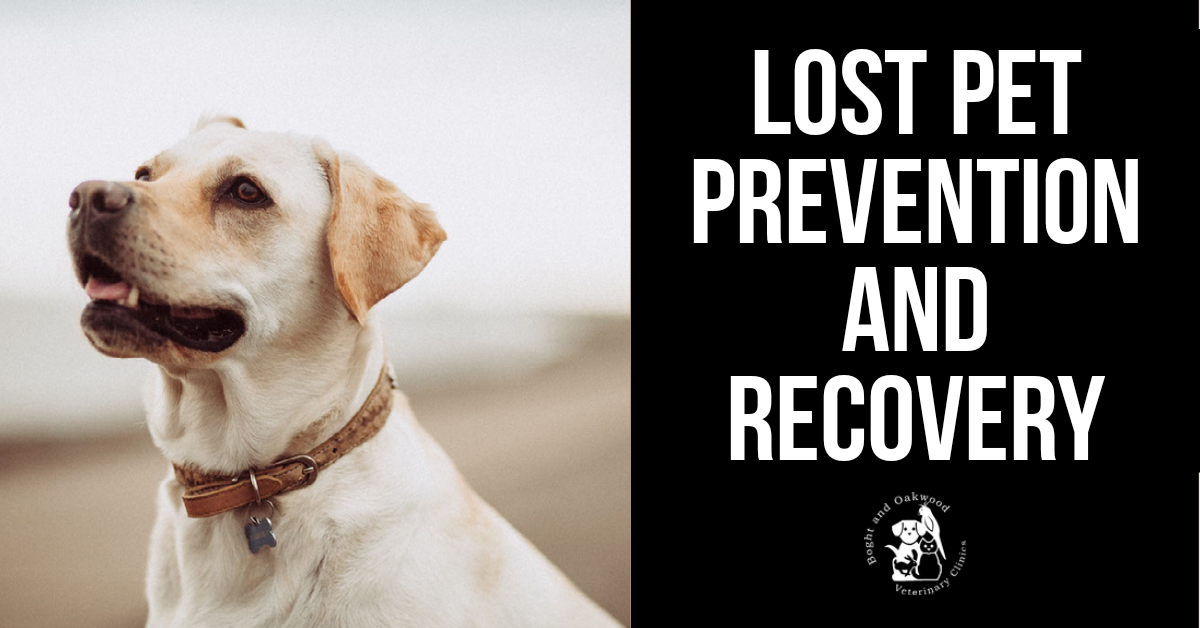
Did you know that roughly 1 in 3 household pets will be lost at some point in their lifetime? Maybe it’s happened with one of your four-legged family members – your cat slips out while you’re bringing in groceries, or your dog digs under the fence. All of a sudden they’re nowhere to be found and you don’t know what to do. It is a scary scenario for both human and pet. Let’s talk a little bit about how to prevent a missing pet, and what to do if your pet is lost.
Prevention
- Training can significantly reduce the risk of a missing pet. Not only do most training programs work on recall commands, but training leads to a better overall relationship between you and your pet. If you are working on training at home. Practice the sit, stay, and come commands. You can read more about working on those commands at home HERE.
- Secure your home and yard. If you have a fenced yard for your dog to romp in, regularly check the fence line for weakness. This could be where rain has washed out the ground, or a fence post has come loose. Check to be sure all gate latches are in good working order. Inside the house be sure that all exterior doors latch, and make sure your family knows the importance of keeping them closed tightly. If you have open windows, make sure that the screens are not ripped or loose.
- Monitor your pet when they are outside. Be sure to keep an eye on your pet and bring them inside whenever you are not home.
- Spaying or neutering your pet has many health benefits and can prevent them from wandering off. A spayed or neutered bet is less likely to go looking for a mate.
- While getting your pet microchipped or getting them a collar with tags won’t prevent them from roaming, it is something you should do as soon as you bring your pet home. Microchipping is a simple procedure that can be done at the veterinary office. Just be sure to keep the information with the company up-to-date. If you are getting your pet a collar and tag be sure to check the tags regularly for wear and make sure the collar is secure. Both a good tag and microchip can significantly increase the likelihood of recovering a missing pet.
- Bonus: Take lots of photos of your pet! Again, this won’t help prevent a lost pet, but it will help with getting them home. If you are in the unfortunate situation of not knowing where your pet is, having a recent photo will help get the word out. Which brings us to…
Recovery
- If your pet has gone missing, the first thing you should do is put out food, water, and a comfort item. This can be a dog bed, a toy, or a blanket. There is a chance your pet will return on its own.
- Call your local veterinary clinics, animal shelters, and police departments to report your pet as missing. It may be a good idea to curate a list of these phone numbers in advance of a missing pet so that you do not waste precious time looking them up. Many places will ask you to send in a recent photo of your pet.
- Create lost pet posters to hand out and hang up in the area where your pet was last seen. Be sure to include a good photo of your pet and your contact information. You can also share the flyer as an image on social media. Ask friends and family in the area to share the photo. You may be able to find local Facebook pages or websites for lost pets that will spread the word in your area as well. Once you have posted your flyer online, check back often.
Losing a pet can be a distressing and heartbreaking experience. It is our sincere hope that all of our clients and patients never experience it. Hopefully, these tips help to keep your pet at home, with you, where they belong.

